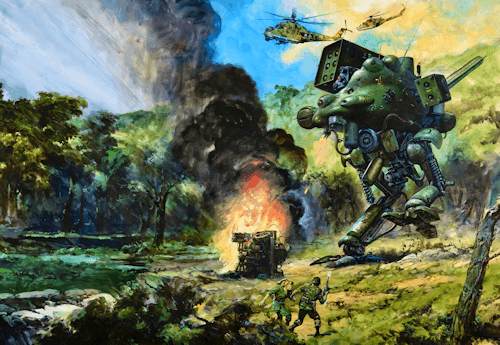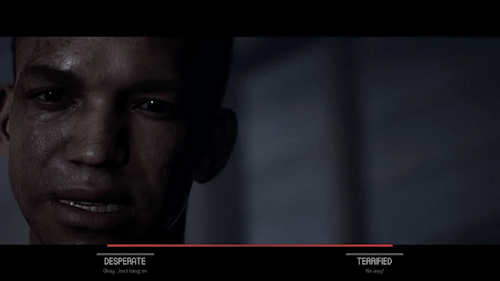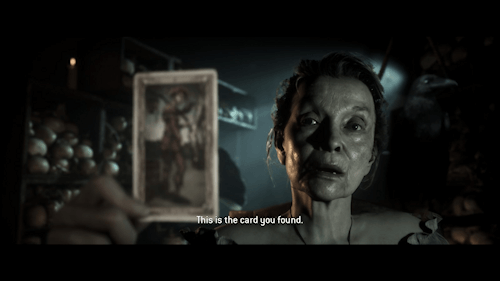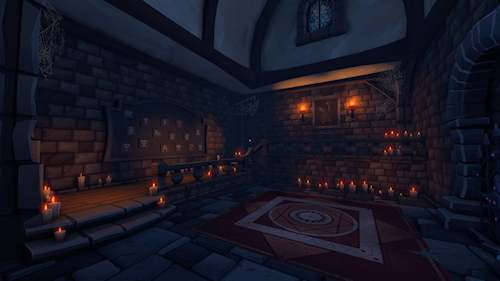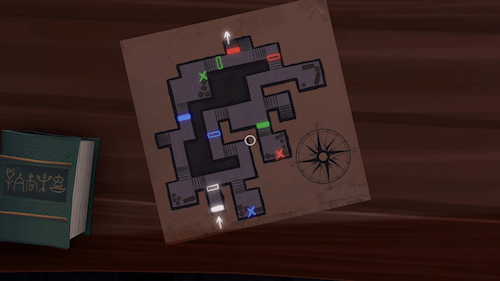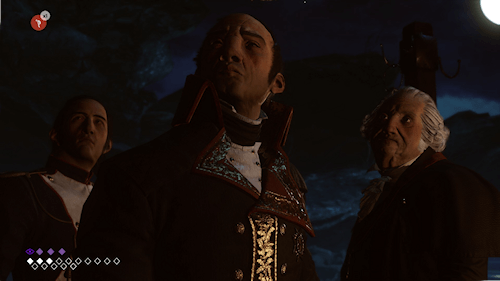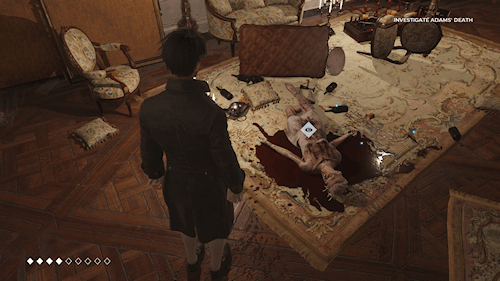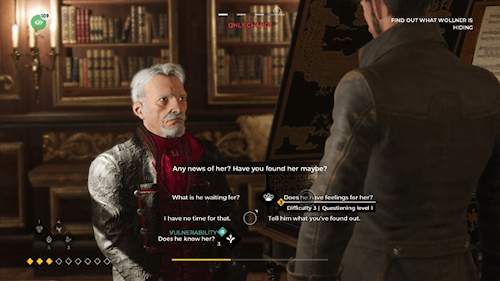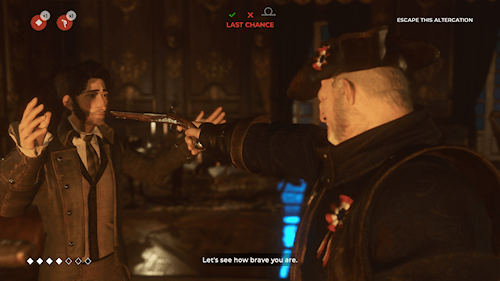Over the ridiculous number of years since I first started this blog I’ve developed the unfortunate habit of writing very terse impressions, if any at all, of the online games I play. This is especially regrettable given how much time I often sink into them. That’s part of the problem though – when you’re playing an MMO, a live service game, or just an online game you’re particularly hooked on, when is the right time to jump off the treadmill and write something up about it? In the early days of this blog the intent was actually to write about my online sessions themselves rather than focusing on final thoughts about a game, but with so many things competing for my free time combined with the effort it often takes to try to write something up, that quickly fell by the wayside. As such, other than briefly mentioning that it was in fact my 2024 game of the year, I somehow still haven’t talked about Helldivers 2 yet…
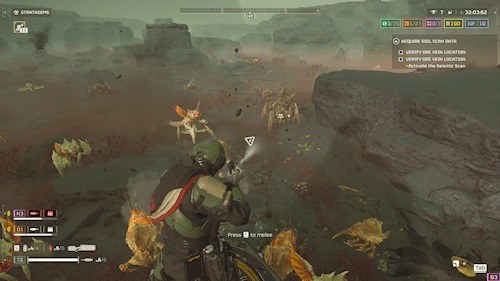
“Getting rushed by bugs immediately upon respawn. Yikes!”
I first heard about the original Helldivers and how much chaotic fun it could be around the time it launched back in 2015. I was definitely intrigued, but I never actually got around to trying it out. Fast forward to 2024, and owing largely to not really being in the PlayStation ecosystem at the time, the sequel was barely on my radar. I’d read the random skeptical comment about whether Arrowhead had the chops for such an ambitious sequel, but that was about it. Shortly after it launched, however, I stumbled upon a video or two that made the game look utterly amazing and it didn’t take much more before my interest was abosolutely piqued. The one problem I had was that this game is, like its predecessor, very co-op focused, and I’ve made the mistake of buying into co-op heavy games without a dedicated friend group to play with more than once in the past, and felt like that was a lesson… eh, mostly learned. Not wanting to admit defeat, I threw some feelers out to a few different friend groups, but as I’d predicted, no one bit. Then, quite randomly, one of my co-workers (who I’d actually never gamed with before) told me he’d just bought it and was loving it so far, and asked if any of us might be interested in playing it with him sometime. I picked it up that very evening.
Let me take a step back and give a quick overview of the game for the uninitiated. Helldivers 2 is a sci-fi online cooperative PvE third person shooter with persistent character progression, and is not unlike something like Vermintide and Darktide or Deep Rock Galactic, a genre which itself seems to have had its roots in the awesome Left 4 Dead series. Thematically, it barrows heavily from the 1997 Starship Troopers movie, but more on that later. The basic premise is that you and your squad are super expendable soldiers dispatched onto alien worlds to perform a variety of nearly suicidal missions on a large, open map, before waiting to be extracted in what can often be a tense final stand. The action is visceral, with huge hordes of enemies, massive explosions, and purposely higher than normal odds of killing yourself and/or your own squadmates in what are often hilarious moments of insane chaos. Yeah, I think that’s pretty much it in a nutshell!
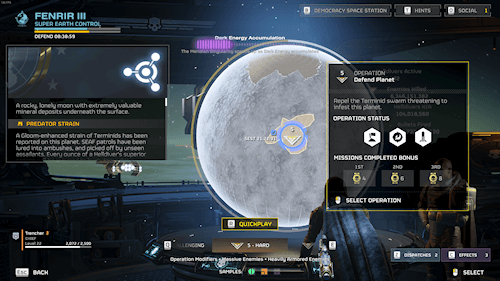
“Picking my next mission aboard my destroyer.”
As soon as you launch the game you’re met with an intro movie that pitch-perfectly sets the tone, casting the player as a volunteer for Super Earth’s elite “peacekeeping force”, the Helldivers, whose job it is to spread “managed democracy.” The on-the-nose darkly humorous satire poking fun at western patriotism is, again, more than a little reminiscent of Verhoeven’s Starship Troopers. You’re then thrown into a tutorial where you learn the basic controls and the humorous worldbuilding doesn’t let up. You’re next tasked with christening your destroyer (the ship that serves as each Helldiver’s personal between mission hub) by combining some pre-selected words to come up with your own ridiculous but lore appropriate name (mine is “SES Distributor of Truth”.) By the time you’re on your destroyer and ready to go on your first real mission, you’re already totally indoctrinated in the lore, or at least in the spirit of it. This is a great thing for a co-op game as, like Deep Rock Galactic’s legions of drunkard “Rock and Stone!” shouting space dwarves, most of the player base is aligned with a sense of casual roleplay that adds to the fun and a real sense of community. It’s so effective that Arrowhead probably doesn’t even need to employ the guy who, acting as something of a Dungeon/Game Master, handcrafts elements of the overarching campaign… but please keep him!
After spending a little while exploring my destroyer and the various options in the UI, I was already very impressed with the presentation. Everything felt well-polished and slick, even if I didn’t know exactly what a lot of what I was seeing actually was.
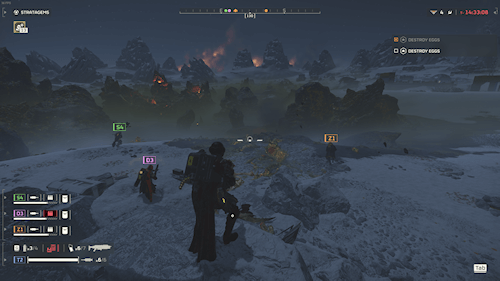
“The squad assessing a Terminid nest from afar. Real far.”
With my work friend not yet online, I decided to hop into a “quickplay” game with randos. My random squad of hapless FNGs landed in a tight ravine under the cover of a fairly dark night and almost immediately began getting swarmed by Terminids, one of Helldivers 2’s enemy factions who are extremely reminiscent of the “bugs” from, once again, the Starship Troopers movie. I had no real clue what I was doing, so I just quietly followed everyone else’s lead, and it was pure fucking chaos. Assault rifle fire lighting up the area, gore and body parts flying, grenades exploding, people dying. Holy shit! At some point I picked up a large machine gun support weapon dropped by one of my comrades who had traded it for something else they found and quickly started to have a lot of fun by hanging back and playing fire support, diving into prone and laying down a hail of bullets with each encounter. After that mission, I figured out how to customize my loadout so I could start bringing my own machine gun with me, and the rest of my afternoon practically disappeared. Now absolutely jonesing for more, I jumped on again for another session that evening, and this time hooked up with my friend. Playing with voice comms and something more closely resembling teamwork only served to add another layer of fun to the game, even if we did have to either play as a duo or rely on randoms to fill out our squad’s third and fourth slots. I was absolutely hooked.
So back to the mechanics, the basic structure of a mission looks something like this: On your destroyer, you head to the mission table and pick a sector, a planet within that sector, and a mission or set of missions on that planet. There’s a number of procedurally generated planets with different biomes, minor hazards, and weather conditions. Mission types depend on the difficulty you select and the enemy you’re facing, which include the aforementioned bug-like Terminids, the Terminator-like robotic Automatons, and the newly introduced very sci-fi, zombie-creating Illuminate. There’s a fair variety of mission objectives, such as destroying enemy facilities, killing specific high value enemy-types, retrieving and/or activating something, but they all ultimately play out relatively similarly. As an aside, I’ve always found it amusing just how so many of these missions, especially the secondary objectives, feel like extremely simple grunt work that SEAF (Super Earth Armed Forces) probably simply needed “a pair of hands” and “boots on the ground” to perform. “Sure, send us on a literal suicide mission simply to go turn a few leavers and press a few buttons to get an otherwise automated mineral extraction site going again? Why not?!” I guess that’s just SOP for the Helldivers, though.
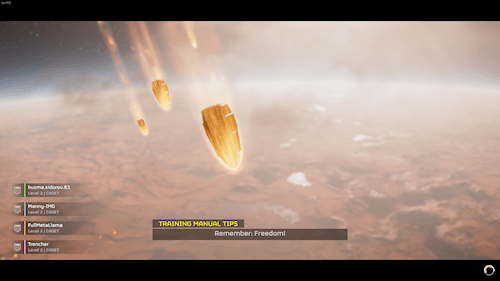
“Hellpods shooting down to a planet’s surface.”
Anyway, you jump into your “Hellpod” and select your loadout of stratagems and a booster, and once the whole team is ready, your Hellpods launch like artillery shells out of a massive cannon onto the planet’s surface. From there, your team has to plot your course from wherever you picked to land to each of your objectives. Typically there’s a fairly easy pattern you can employ, such as a simple clockwise or anti-clockwise loop from one objective to the next, and finally to the exfiltration point. Along the way, you’ll come across secondary objectives, enemy outposts, and points of interest which can sometimes include supplies, support weapons, samples, medals, and even super credits. More on all those later. Of course, those points of interest are often teaming with enemies, and you’ll also have to contend with patrols and even enemies calling in more enemies, leading to sometimes needing to fend off multiple waves of them. Once your main objectives are complete, or if you run out of time, you make your way to the exfiltration point and call down the shuttle, which takes an uneasy 90 seconds or so as your enemies make one last assault, again, usually consisting of several intense waves.
Of course, that’s all incredibly reductive. I didn’t mention how you need to call down special support weapons and equipment (including vehicles) based on the “stratagems” you picked at the beginning of the mission by throwing a beacon down at where you want them to land, or how stratagems have a time between re-use and with all of the Eagle-1 assault ship based stratagems, a number of re-uses between when the Eagle has to return to your destroyer for a lengthier re-arm. I didn’t mention how every stratagem and pretty much every other in-game interactive object requires a QTE-like pattern of quick key/button presses which have to be executed properly. These aren’t difficult, but executing under extreme stress, which is often the case, can lead to a minor fumble with major consequences. I didn’t mention how dying works – that is, if you die, your team mates have to use a reinforcement stratagem they throw down to call you back in, and you have a limited reinforcement budget. You also have the ability to similarly request a resupply so that you and your team can restock on ammunition, grenades, and the all-important healing stims.
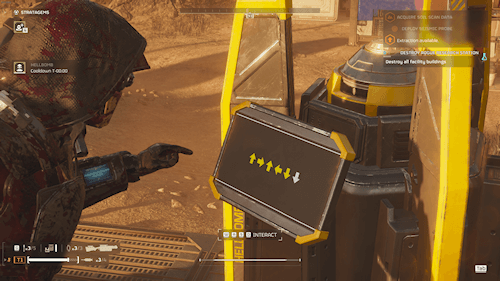
“Time for a little Dance Dance Revolution!”
And I didn’t really mention the stratagems themselves. In addition to being able to request a larger support weapon, there are things like defensive drones, shields, and distributable supply packs, and more stationary defenses like sentry drones of various types, minefields, and manable turrets. More importantly, you have one of the standout features of the game in the form of often impressively devastating strikes coming from both orbital attacks launched from your destroyer and airstrikes delivered by the aforementioned Eagle-1. There’s a large variety of these, from attacks meant to devastate a wide area of light targets, such as the Eagle Napalm Airtrike, to those made to hit a single heavily armored target with pin-point accuracy, like the Orbital Railcannon Strike. The moments when a huge strike hits exemplify Helldiver 2’s immersive, often very cinematic graphics, filled with impressive looking explosions, destructible buildings and terrain, and intense particle and lighting effects. Of course, they can also exemplify the game’s reputation for intentionally embracing hilarious accidental “friendly fire” team killing incidents as well. There have been a small handful of other games, such as Mercenaries 2: World in Flames, which had similar air strike mechanics, and it has never not been fun mechanic to me.
In the end, this all comes together to feel like a weird blend of something like a cooperative, PvE version of a Battlefield game (though Planetside 2 might be a closer comparison.) That is to say, a lightly tactical shooter mixed with an array of interesting tools and a huge open-world battlefields which both give players a lot of freedom with when and how to complete objectives and engage in combat, and leads to some amazing emergent moments.
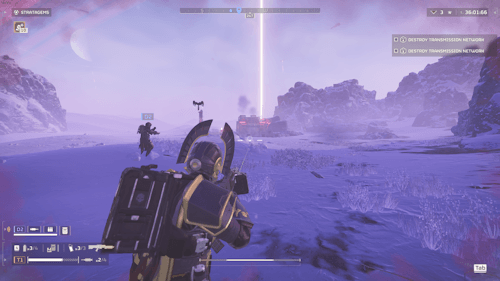
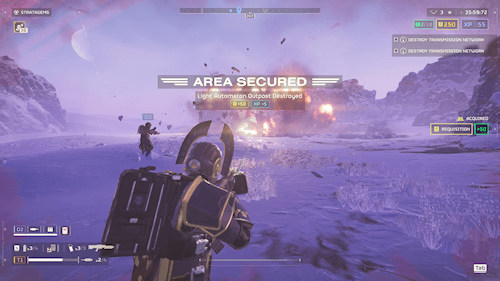
“The glorious aftermath of an perfectly executed orbital strike.”
Back on your destroyer, you’re shown your mission statistics, the experience points and other rewards you got from the mission, and a rating. Rewards come in several forms. Of course, you gain experience points to level up your Helldiver, though leveling up really only affects some gating around certain stratagems and not much else. There are also Requisition Slips, which are the main currency you’ll be using to purchase new stratagems and ship upgrades, and are awarded fairly generously alongside XP. The ship upgrades also require a much rarer currency, samples. Samples are picked up around the map in missions and have to be carried to the end of the mission and successfully extracted with to earn, which is harder than it sound since they’re also dropped upon death… and if you haven’t figure this out by now, you will die. Probably a lot. These can take a lot more work to grind out, especially given that there are three types which correspond to different difficulty levels, and the two associated with more difficult missions won’t be available at all until you progress up the ladder. Still, ship upgrades are valuable, but they’re also more of a long term progression system. Finally we have War Medals and Super Credits. War Medals are the currency used to purchase items in “War Bonds” which are Helldivers 2’s battle passes. Super Credits are the game’s actual cash equivalent currency, used to purchase items in the “Super Store” as well as the War Bonds themselves.
Helldivers 2 takes a similar approach to Halo Infinite when it comes to battle passes and its purchases. War Bonds contain a number of cosmetic items, such as armor, helmets, banners, capes, and emotes, as well as the occasional new piece of equipment (including weapons) and even sometimes access to special stratagems. Essentially, everything you can progress in the game except for ship upgrades and your character’s level can be found in War Bonds. War Bonds are not time limited, so once you own one you can spend your Medals in whichever ones you want whenever you want, which is handy since you may very well find yourself trying to prioritize going after a few particular items in multiple War Bonds first. The Super Store works like Halo Infinite’s originally did, which is to say it’s unfortunately entirely based around FOMO. You’re presented with a small number of items, mostly just cosmetics, every couple of days. I’m not a huge fan of that system, but there aren’t that many items in rotation, and I’m not nearly as obsessed with cosmetics in this game as I was with Infinite either, thankfully. The inclusion of new weapons and other legitimately game changing items in the War Bonds and the store is a little controversial, as despite being an entirely cooperative game, there are naturally still “flavors of the month” and/or “meta” builds which often include them, but again, this is an entirely PvE game, so it’s not exactly “pay-to-win” in a way anything close to a more competitive game could be.
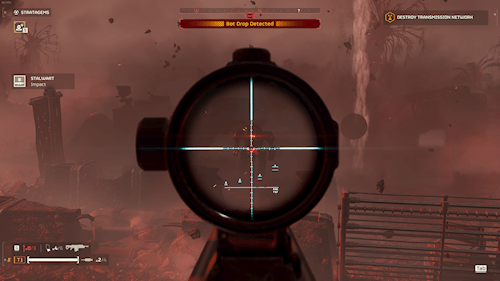
“You can optionally aim down sight/scope for extra precision.”
Beyond that, your ship lets you customize your character with those aforementioned armor sets, helmets, capes, banners, emotes, and most importantly, your primary and secondary weapons and grenades. These are just parts of your standard loadout, and not linked to the whole picking stratagems thing you do just before each drop, though perhaps just as important. There’s a good variety of weapon types, from assault rifles, shotguns, and DMR primary weapons, to pistols, grenade launchers, and even melee secondary weapons for those who like to experiment with different playstyles (or more likely, amusing “meme builds.”) Oh, and I should also mention that your armor comes in three different varieties, ranging from light to heavy, which trade off speed, mobility, and stamina for protection. Armor sets also includes a passive ability which usually grants the wearer a couple of bonuses, such as increased grenade capacity or reduced fire damage, for example. The basic armor in this game has a pretty cool, unique look to it, though designs for newer armors, as well as the designs of enemies and vehicles borrow liberally from all of the place. Of course, we have obvious Starship Troopers influence, but there’s also a little Halo, Planetside, Earth Defense Force, and perhaps even some Warhammer 40,000 in there as well. It’s not too blatant, and it mostly all gels into something fairly cohesive, and importantly there are no ultra ridiculous immersion-breaking cosmetics either, thankfully.
Progression can move pretty slow if you’re not pouring absolutely tons of time into mission after mission with a full squad. To get more, faster, you’ll want to progress to higher and higher difficulties. These grant more experience points (via a multiplier) and medals, plus access to those higher tiers of samples. The tradeoff, however, is that the mission types change and new enemies appear, including some massive, very difficult to kill ones. The most notable element here is the armor values at play, which ranges between unarmored, light to heavy armored, and tank, with several steps to many of these. To kill enemies with higher armor values you’ll need weapons that can penetrate or otherwise damage these types of armor. This means that as you progress, you’ll also want to develop your loadouts accordingly. For instance, playing solo I could easily wipe the floor on Medium difficulty, but recently moving up to Challenging and Hard and beyond, I ended up replacing my primary weapon with one that could do medium penetration, a secondary that could do anti-tank damage (for emergencies) and stratagems – a support weapon, an airstrike, and a sentry turret – that could all do heavy to anti-tank levels of damage.
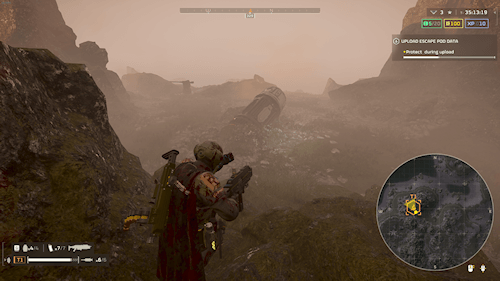
“Solo. Checking my mini-map for blips – things were suspiciously quiet.”
Speaking of soloing, not only did I regularly play with my work buddy, but one of my old [TPG] chums Zabka (AKA JoeyPants) randomly started joining us too, and soon we had a fairly regular trio with the fourth often being filled by a friend of one or the other, or a rando. It was honestly a blast playing with a dedicated crew again, which was the icing on top of why this was my 2024 game of the year. Unfortunately, my work friend and I eventually stopped finding ourselves in-game at the same time, so we stopped playing together as much, and then Zabka just seemingly dropped off the face of the earth, and next thing I knew I found myself either having to play with squads of randoms again or going it alone. Playing solo in Helldivers 2 isn’t nearly as depressingly unsatisfying as it can be in many of these sorts of co-op focused games, but it’s also quite a bit more challenging given that less people means less stratagems, less eyes on the horizon, less shots coming from less angles, etc. It’s definitely doable, even up to the highest difficulty levels for highly skilled players, but it’s nowhere near as fun to me. As mentioned, I recently found myself hopping on and trying to improve my solo game, which meant quite a few tweaks to my loadout and tactics, but it’s been rewarding to see myself progress this way. This won’t really sustain me though, so sadly, unless any of my friends suddenly develop an interest in Helldivers 2, I’m likely more or less done with the game.
Regardless of whether I keep trudging away at solo dives, start playing with randoms again, find a new squad, or just hang up my cape entirely, I’ve absolutely loved my time with Helldivers 2 so far. If what I’ve described sounds at all enjoyable to you, especially if you have a few friends to play with, I’d highly recommend checking it out.
